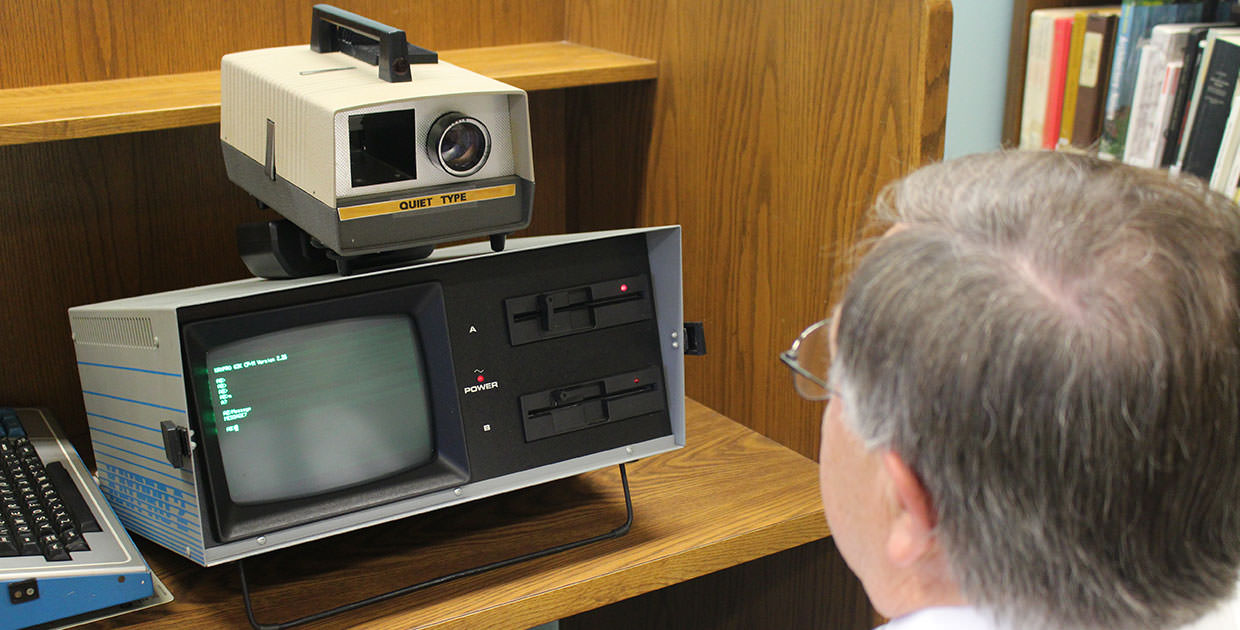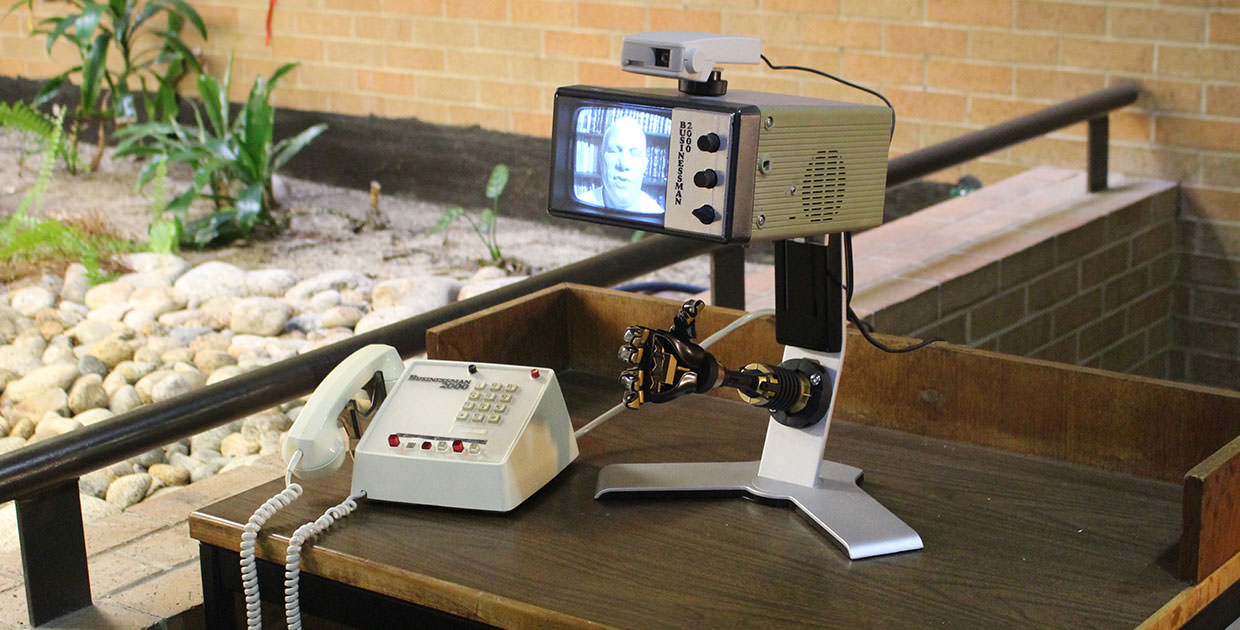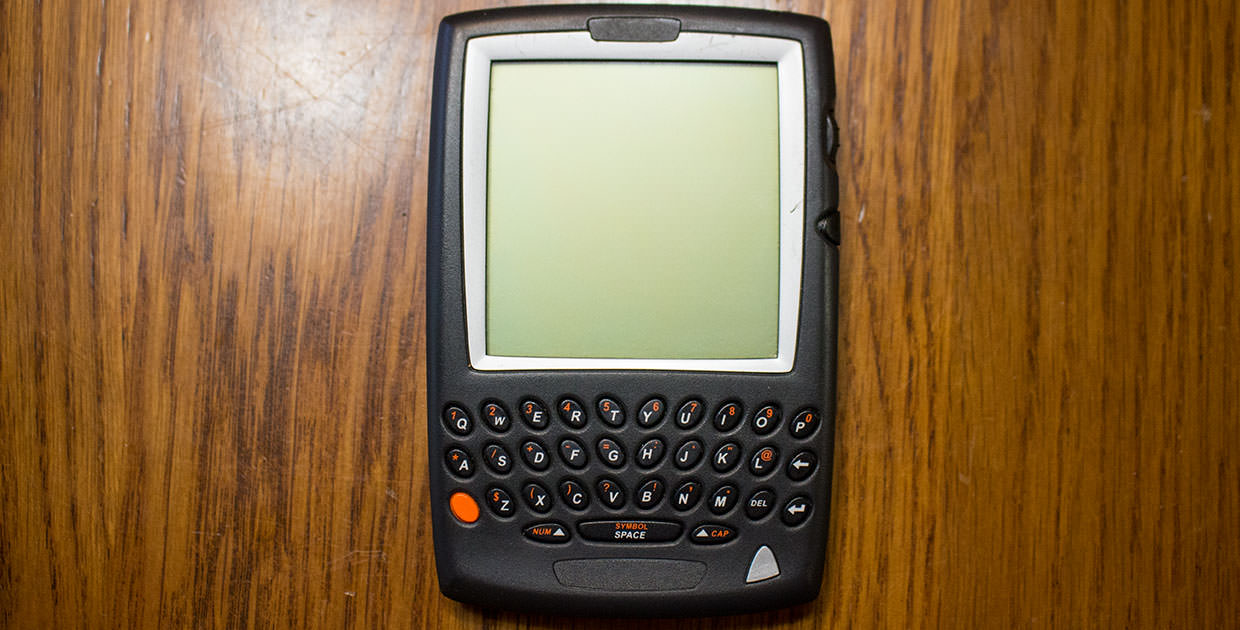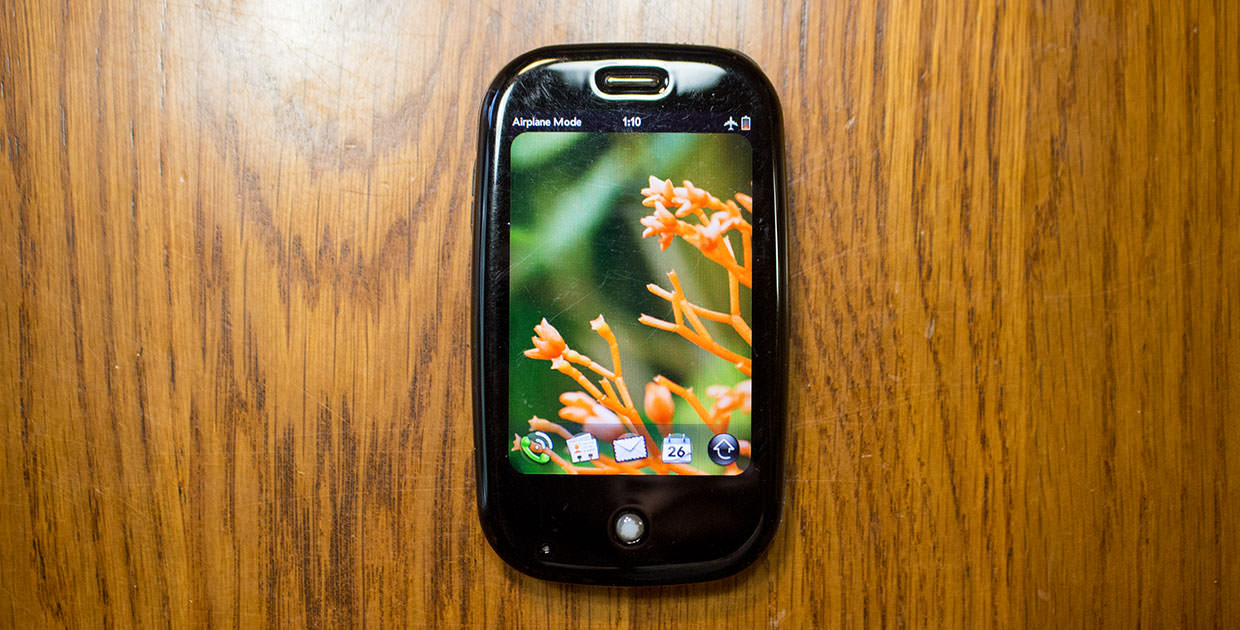Expanding Communication
The research conducted at the Communication Research Institute under the Dialog Interchange Program follows strict standards and guidelines. Our goal is to develop technology that advances communication and corrects the flaws of verbal and non-verbal transference. It is our mission to explore the depths of the mind beyond what other scientists consider reasonable leaving no idea untested.
Through the development and immersion of the user into our technology we can create a better world. We will no longer have misconstrued meanings or hidden subtext.
A mind can be a terrible thing, but we intend to assert our ideas no matter the cost. Our grant funding has propelled the innovation of each of these prototypes.

Quiet Type
The Quiet Type prototype is a retinal optical tracking system that would extrapolate Morris code based on blinks. The user would blink out the words that he or she wished to type and the system would analyze the data and type out the message.
- Based on a Kaypro 2 early prototype computer
- Optic image recognition through image analysis
- Serial bus connection
- Proprietary software developed in house based on Morris code
Programming and software development was a huge hurdle since the computers available on the market were significantly slower. We worked closely with Non-Linear Systems to acquire an advanced and unreleased version of their up and coming computer system. There were several kinks to sort out even with the hardware while it was in testing.
Launched 1975
Quiet Type was first tested on September 2 of 1975. Dr. Ivan Stevenson, a colleague, was the first to test the prototype.
The initial tests revealed troubling results including eye strain, severe migraines, loss of vision, and partial paralysis.

Launched 1984
The Businessman 2000 was first tested on March 13 of 1984. Philip Anderson, an office coordinator, and Harrison Eldridge, a department head, were the first to try out the new systems.
Early tests were fraught with detrimental results. Mr. Anderson subsequently lost his right hand due to an exponential amount of pressure applied. Later tests revealed inappropriate use of the machine when it was released to a larger audience across the campus.
Businessman 2000
The Businessman 2000 could provide tactile feedback that was telegraphed through a video conference phone. At the time research was underway for a videophone system, however we saw that a system used primarily for business negotiations you would need to seal the deal with an old fashioned handshake.
- A telephonic video conferencing phone system
- Video capture camera and miniature television playback
- Force recoil activated robotic hand with servo gears
- Traditional phone receiver and dialing method
Piggybacking off the telephone system we were able to utilized ten twisted pairs to successfully stream live video. We converted a serial bus analyzer to recognize input data from the robotic hand and the software on-board could relay that data back to the servo motors of the receiver's robotic hand.

Pretext
Pretext is a modified cellular device that picks up on brainwaves and predicts the content of a text message and sends it for you. We developed predictive protocol by analyzing slow cortical potential mixed with theta and beta waves.
- Blackberry Cellular wireless communication devices
- Slow Cortical Potential and Theta/Beta wave detection grid
- Intranet communication system
- Proprietary predictive text algorithm
This system would read the data from the brain waves and interpolate the intent of the user. The system would then construct a message and automatically send it to its intended recipient.
Launched 1998
Pretext was first tested June 9 of 1998. We loaned out several of our new phone systems to administration department of the engineering program next door.
The results were disastrous. Many of the phones were purposely broken or damaged to prevent messages from being sent. We only have one original phone from the test group that still operates. Quite a few of the associates were fired due to sexual harassment claims and inappropriate actions. The engineering department has yet to return our calls. Our program was put on suspension and we lost funding temporarily.

Launched 2003
The Living Profile social media system was the first of its kind. It was also the first prototype to be solely tested on students instead of faculty and staff as per the rearranged funding contract with the university.
The tests proved promising as we had amassed a large user base almost overnight. The students were glued to their devices and profile demands reached an all time high of 10 hours daily before the system was put offline. However, after the tragic death of a student, the program had suffered a serious blow. We needed to regroup and understand the importance of the research.
Living Profile
The Living Profile social media service was an application or app that integrated the user with their devices. Each user was required to update and maintain their profile as if it were a living thing. This development proved that through uncertainty with one's online presence the user would be highly invested in maintaining communication.
- A "lifelike" user profile
- Simulated nurturing and care-giving
- User faces consequences for neglect
- Profiles could be terminated if not maintained
Each user would be required to nurture and care for their profiles by providing it information about themselves. They would need to update regularly or face consequences of termination if their user profile became stagnant. The system of profile turnover assisted in maintaining active and interested users.
Opticon
Opticon is mobile cellular computer and optical projection augmented reality simulator. This device would allow the user to be within arms reach of all needs for communication and updates on their day.
- Quad-core 1.5Ghz ARM processor with 2GB Ram
- 32GB Solid State storage
- 80 foot actualized holographic projection screens
- Immersive high definition surround sound
- Wireless connectivity Global GSM/CDMA
We developed a system that incorporated the best of so many things. An ultra fast smartphone with a world class app market paired with high definition holographic projection glasses. The system would create an augmented reality simulator for the user and display pertinent information including weather, messages, navigation directions, alerts, alarms, phone calls and any app they choose to install.
Launched 2012
Opticon was first tested November 25 of 2012. Keeping with our student test subject approach we found a willing graduate student, Kyle Sinclare, who would assist in its development.
Thankfully our only incident during this test period was a sprained ankle. However, we had learned that a younger user base will ultimately want to install applications and end up using their device far longer than our initial timed expectations. The system ultimately came to a halt as it was infected with pop-up advertising and viruses.
